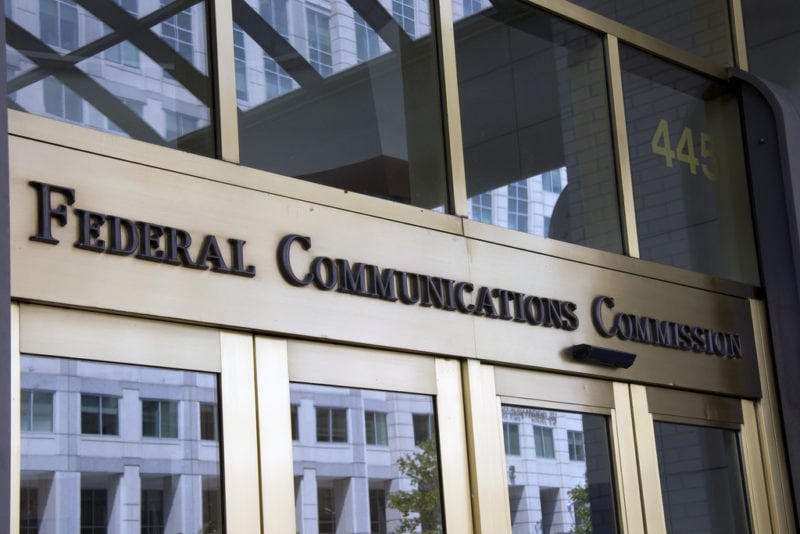Latest News

Federal Communications Commission. Photo: FCC
The C-band situation in the United States is once again under the microscope. Respected satellite equity analyst Giles Thorne of Jefferies has released a new report titled “The Orbiter: All Eyes on the Ivory Tower” which examines the situation as we head into 2019. The satellite industry through the C-Band Alliance (CBA), a combination of the biggest operators in the industry (SES, Intelsat, Eutelsat, Telesat), has come up with a market-based proposal to clear portions of the C-band spectrumto support the introduction of 5G services in the U.S. This proposal also protects the valuable satellite-delivered services provided by the C-band.
We are now entering a critical phase for the role that satellite might play. Thorne said that with the C-band Notice of Proposed Rulemaking (NPRM) reply comment period now ended, everybody is sitting patiently as the Federal Communications Commission (FCC) mulls over expanded C-band use. “As we look back at the FCC docket, what started out as a linear record of stakeholder views has now become a rather tangled mess, with counter-arguments layered upon arguments, layered upon basic facts. Among all the noise, it’s our view that an FCC Order to proceed willcome forward in the coming weeks/months — the real debate is what will that Order look like. The CBA’s proposal has retained its position as nexus for FCC adulation but has frankly also been the target for ever more curt opprobrium. This was always to be expected given the FCC’s notice and comment rulemaking approach is a zero stakes poker game for all involved, in our view,” said Thorne.
However, telecom operators are also involved in these discussions, and looking to gain more of the spectrum. “No one can begrudge the two loudest critics of the CBA proposal, T-Mobile US (TMUS) and Comcast, their right to make the most of this small window to crow. TMUS was the first major stakeholder to call for a specific alternative to the CBA proposal for re-allocating the band. Its incentive auction approach is close in nature to the innovative approach the FCC adopted for the 600 MHz re-allocation. TMUS makes laudable claims but it’s clear to even our untrained eye that the ‘full band, full arc’ licensing of the C-band makes it singularly unsuitable for an incentive auction,” said Thorne.
Thorne said there are clear incentives for both T-Mobile and Comcast to muddy the record on expanding flexible use of the C-band with the discrediting of the CBA proposal. He said that that T-Mobile has anchored its sector re-defining acquisition of Sprintto elevating/accelerating 5G investments, and therefore stands to have its arguments undermined by other levers of regulatory intervention that improve the timeline for 5G in the U.S. (namely, the CBA proposal. Comcast sits on a large back-book of fixed broadband business that is set to be disrupted by 5G (and the launch 5G products from AT&Tand Verizonare exactly this type of residential fixed broadband). “For both protagonists, the comment/reply comment period is a very good tool for mitigating 5G downside risks at this point,” he added.
There is an optimism that the satellite industry will not be marginalized when it comes to 5G services in the United States. Thorne believes that a favorable FCC order will come forward that places the CBA proposal at its center. He says that he continues to envision the CBA striking and announcing secondary market access agreements for the band ahead of any FCC order, not only to inject momentum into the process, but also to signal to the FCC that an approach that embraces the CBA proposal will be ‘guaranteed’ to deliver favorable and welcome regulatory outcomes (i.e. the rapid clearing of spectrum and investment in a consumer 5G mobile service — not just the residential broadband derivatives that are currently in the market — perhaps as early as 2019).
One of the potential ramifications of a favorable outcome will see an investment in new satellites, which will be good news for the overall industry. “We’ve finally now seen confirmation that the CBA proposal will indeed require Intelsat and SES to procure new satellites: a CBA filing on Dec. 19, 2018 speaks of Intelsat and SES requiring eight new satellites conditional upon the proposal being approved — the new satellites will enable Intelsat and SES to operate approximately the same amount of capacity to carry video and other services that they have today in 500 MHz, but using only 300 MHz of spectrum — given the constant under-current of ‘putting America first,’ SES and Intelsat will procure the satellites from U.S. manufacturers. This is a very large satellite order comfortably equal to $1.5 billion in potential revenue for the U.S. makers,” said Thorne.
Get the latest Via Satellite news!
Subscribe Now